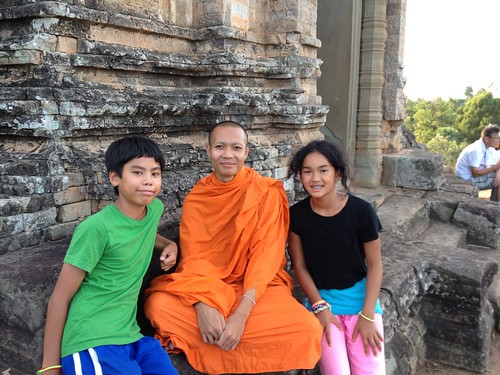
Two weeks ago, I took a homecoming trip to Cambodia with my family. For those of you who have been following my blogging since 2004, you already know that Cambodia is in my heart! When my husband and I were in Cambodia in 2000 to bring home Harry, our infant son, we got a blessing from a monk. We promised the monk that we would hold Cambodia in our hearts and travel back with our children to their birth country when they were old enough to appreciate it. That time was earlier this month.
We not only kept that promise, but our family went on to support various projects in Cambodia through the Sharing Foundation and through the connections I made through my first blog, Cambodia4kids. Along the way, I united my passion for social media and nonprofits, training, fundraising with Cambodia.
This is the first of a three-part post about what I learned about social media, NGOs, and Social Change in Cambodia. This post focuses on the work of several NGOs, most importantly, the Sharing Foundation, that cares for children in Cambodia.
My last visit to Cambodia was in 2007 and I remember how frustratingly slow the wifi felt compared to high speed access I enjoyed in the US. I had to adapt all my social media techniques for very low bandwidth and do it in real time. The speed and access to the Internet has changed dramatically. I was able to get fast wifi and 3G on my smart phone almost every where I went, with the exception of very brief patches in rural areas when we left main roads. I was able to share photos, tweets, Facebook updates, and Instagram photos in real time.
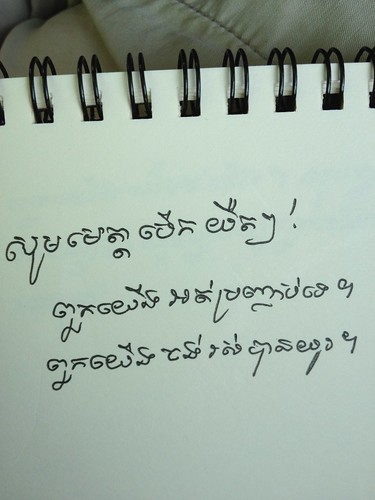
Having Internet access on the five hour drive from Phnom Penh from Siem Reap came in handy. My Cambodian friend, Mongkol, a blogger that I met five years ago when he came to the US to do his graduate studies, wrote us a note to hand to our taxi driver. However, our taxi driver was talking on his cell phone during the drive. I posted on Facebook that I wished I had a sign in Khmer that said, “Don’t talk on your mobile phone while your are driving.” Three minutes later, Mongkol write up a note, photographed it, and posted it on my Facebook wall!
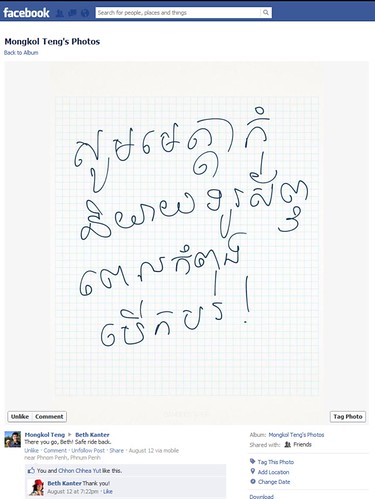
Also, Twitter was really helpful in making connections to places and people to see in Cambodia once in country. I tweeted about visiting a wild life and the NGO offered a great tip about not missing the sun bear via Twitter.
Headed to phnom tamao wildlife sanctuary instagr.am/p/N5Kf7LlZpl/
— Beth Kanter (@kanter) August 4, 2012
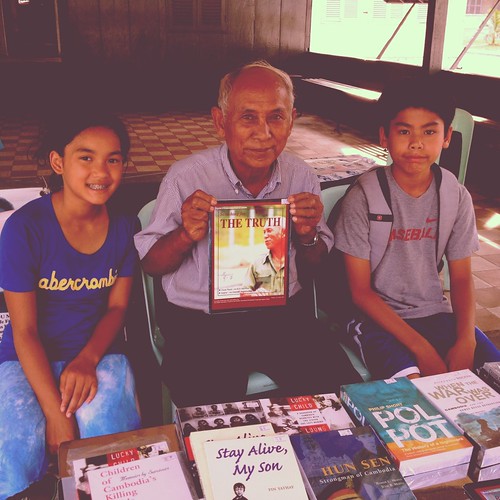
We visited many of the key historic and cultural sites in Phnom Penh, including the Killing Fields and Tuol Sleng. My children learned about all aspects of their birth country, from the beautiful cultural traditions to the realities of genocide.

We made a point of visiting a few of the many social enterprises in Cambodia and civil society NGOs. One of my favorites is Friends Restaurant – which provides vocational training in the restaurant field for street kids – a sort of DC Central Kitchen with a restaurant. The restaurant offers some of the best food in Phnom Penh and eating at the restaurant supports the program. There are a number of NGOs that provide vocational training in the restaurant industry and have a restaurant, including one called “Smile” run by monks in a rural province where my son was born. It feels to give back while eating out on vacation.
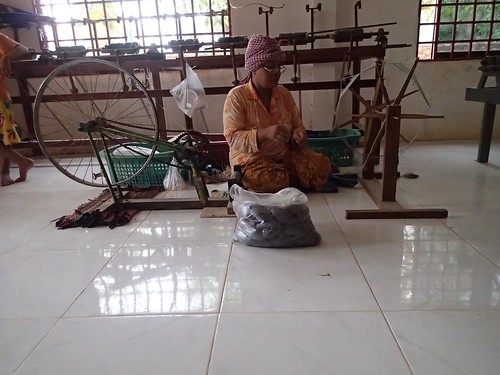
We also visited Lulan artisans. Women are employed to spin the silk, weave the fabric and sew the items that are sold online. The women are paid a livable wage, provided housing, and their children sent to school by the company. Founder Eve Blossom has created a business that merges design, social change within a for-profit business framework.
What most meaningful was to visit the various projects supported by the Sharing Foundation, including the orphanages where my children lived for the first months of their lives. I’ve been on the board since 2000 and had been able to visit the programs in person several times over the past ten years.

At Roteang Orphanage, we dropped in on the Computer School where older children were practicing their word processing, spreadsheet, and basic online skills. The younger children are learning keyboard skills using the OLPC computers donated to the Sharing Foundation.

I met with the computer instructor, Maneth, who is one of 25 students who have graduated college through the Sharing Foundation’s college sponsorship program. (That’s the program that the royalties from my book, the Networked Nonprofit and next book, Measuring the Networked Nonprofit, support). I gave Maneth a copy of the book and we chatted about social media.
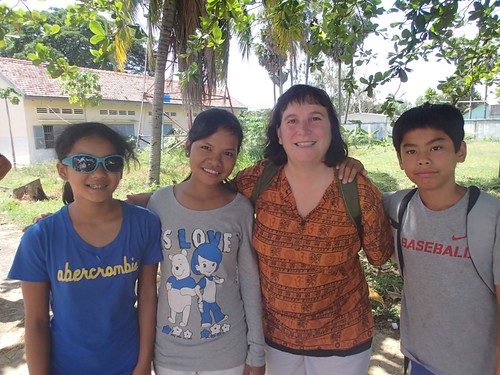
We also got to meet Keo Savon, the second college student that our family is supporting through the Sharing Foundation’s college sponsorship program. She is from Kampong Speu Orphanage where my daughter lived. The orphanage is supported by the Sharing Foundation. Keo Savon is in her second year as a civil engineering major and hopes to do her graduate work in the US.
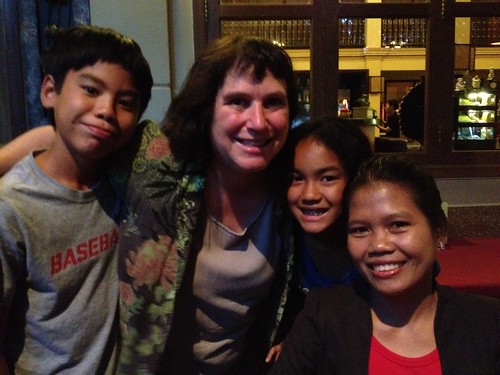
My children also got to meet Leng Sopharath the first college student that our family sponsored for college through the Sharing Foundation. I raised money through my blog and later on Twitter to help send her to college from 2006-2010 through the Sharing Foundation’s program. Although we had been trading letters for two years, I met Sopharath face-to-face in 2007 and recorded this interview. She graduated from college and is married. She is working two jobs, one is at the Bamboo Indochine store at the airport.
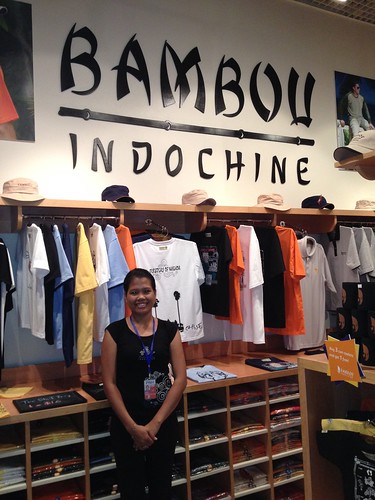
After visiting the Sharing Foundation projects and meeting with the young people we’re sponsoring through their program, I felt proud to be a board member and donor.
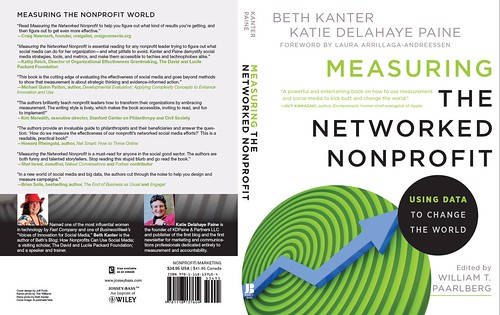
When I arrived home, I received an email with the final cover art of my forthcoming book, “Measuring the Networked Nonprofit,” written with KD Paine. Like my first book, The Networked Nonprofit, my share of the royalties will support the Sharing Foundation’s education programs and help young people like Maneth, Keo Savon, and Leng Sopharoth make a better life for themselves and their country.

Leave a Reply